
© Stas Levshin. (Click image for larger version)
Mikhailovsky Ballet
Le Halte de Cavalerie, Class Concert, Prelude
New York, David H. Koch Theater
18 November 2014
www.mikhailovsky.ru
www.davidhkochtheater.com
Razzmatazz
So far, the programming for the Mikhailovsky’s first New York season has been very clever. The first program, Giselle, offered a familiar frame within which to judge the company’s style. The second, Flames of Paris, had the advantage of being a novelty: it has never been performed in full in the States. But Flames, a predecessor of the Soviet drambalet, also contains the DNA of Russian twentieth-century dance: it has a history, a raison d’être, and that makes it all the more interesting for American audiences. (You wouldn’t want to see a local company performing Flames of Paris; it would make no sense.) The third program, performed tonight and tomorrow, is a mixed bill consisting of two Russian ballets (by Petipa and Asaf Messerer) and one contemporary work, by Nacho Duato. The quality of the works is uneven, and yet, even here, the company makes a good impression.

© Sveta Tarlova. (Click image for larger version)
The idea behind the triptych is to show three aspects of the company’s style: the classicism and character dance of Petipa; the technical pizzazz of mid-twentieth-century Soviet dance, the eccentricities and atmospherics of contemporary movement. None of the pieces is a masterpiece. However, Petipa’s Halte de Cavalerie, made in 1896, is certainly a charmer, a brainless little farce set to forgettable but lively music by the specialist composer Ivan Ivanovich Armsheimer, with lots of pretty dancing and even more clowning around. The story takes place in an Austro-Hungarian village, where two girls (Maria and Teresa) vie for the heart of a boy (Peter). Maria dances en pointe, while Teresa is a coquette in red mazurka boots. When a regiment of hussars comes to town, Teresa is distracted by the attentions of three officers, each more ridiculous than the last.

© Mikhailovsky Theatre. (Click image for larger version)
This slender premise sets the stage for a bubbly series of set pieces. As in Robbins’ Fancy Free, each of the officers (a colonel, a captain, and a cornet) woos Teresa with a dance. The colonel swans around in a graceful waltz, the captain clicks his heels and lunges in a lusty mazurka, the cornet does his best to dazzle with a stiff-legged march. Teresa, boisterously danced by Olga Semyonova, mocks them all. Meanwhile, Maria and Peter dance two lovely pas de deux; in the first, he partners her with the aid of a ribbon. Angelina Vorontsova, the former Bolshoi dancer whose boyfriend stands accused of ordering the attack on Sergei Filin, danced the role of Maria with disarming lack of affectation, sparkling musicality, a huge jump and solid, but un-pushy technique. Her partner was Ivan Vasiliev, who overplayed the character’s tomfoolery but acquitted himself with distinction in the challenging choreography. A set of à la seconde turns (with one leg extended to the side) was particularly impressive, building up a tremendous force. He and Vorontsova have nice rapport, with just a touch of friendly competitiveness.
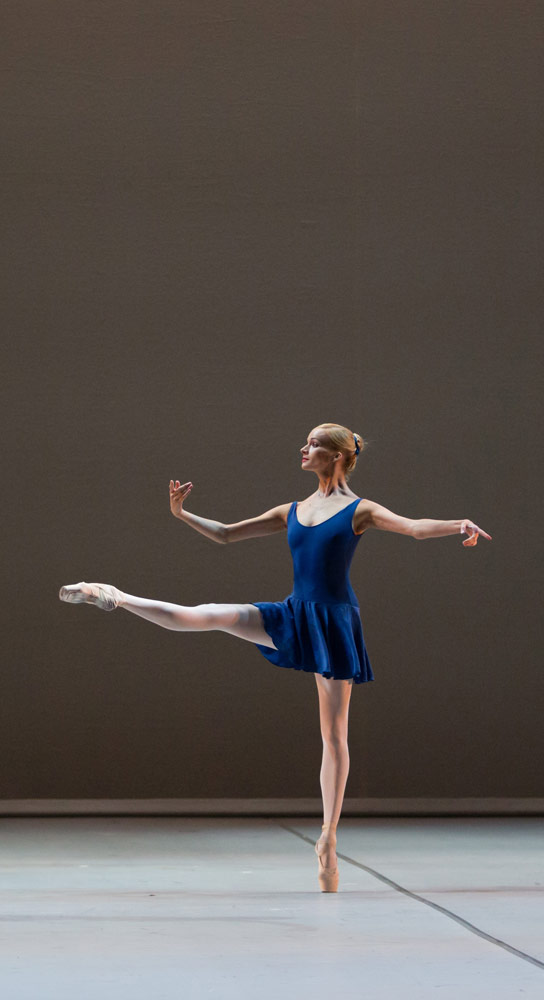
© Stas Levshin. (Click image for larger version)
Asaf Messerer’s Class Concert (1962) is a theatricalized version of ballet pedagogy, opening with exercises for the smallest pupils (recruited locally), and building up to a great crescendo of leaps and lifts. It’s well-structured (if a bit long), musically neat and has the virtue of using a massive number of dancers, of every rank, all mixed together. Natalia Osipova whizzes through, Leonid Sarafanov dances a super-polished cameo, Veronika Ignatyeva leads the women in a barrage of petit allegro, Anastasia Soboleva and Victor Lebedev share a clean, well-mannered pas de deux. Everyone wears an upscale version of rehearsal attire: leotards with skirts for the women and girls, tights and white tops for the men and boys. Tendus segue into ronds de jambe, turns, jumps, and finally the fireworks. In a way, the whole thing is like an extended test, one which, for the most part, the company passes with flying colors. The technique taught by Mikhail Messerer is clean, lilting, un-forced. By the end, everyone is flinging everyone else through the air, and Vasiliev seals the deal with a triple saut de basque and some very fast, but not terribly clean, chaîné turns. As my neighbor giggled when it was all over: “It’s razzmatazz!”
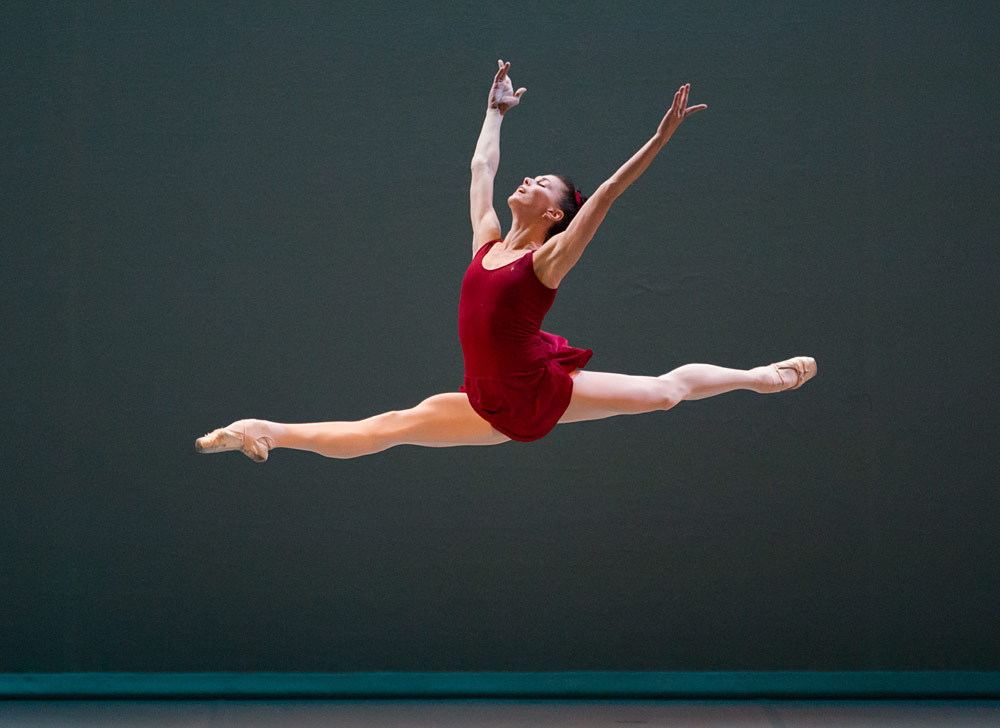
© Stas Levshin. (Click image for larger version)
If only one could say the same for Nacho Duato’s dour Prelude, created for the company in 2011, shortly after the Spanish choreographer was recruited by the Mikhailovsky to fill the post of artistic director (he lasted three years but is still listed as choreographer in residence). According to the program, Prelude is about “the meeting of classical ballet and contemporary dance.” It’s certainly a mish-mash: of musical styles, of imagery, of emotions. Gloomily lit – it’s contemporary, remember! – its musical backdrop skips from arias by Handel to orchestral music by Benjamin Britten and Beethoven and back again. (The orchestra has quite a workout over the course of the evening, which might explain some slight wobbles, particularly in Class Concert.)

© Nikolay Krusser. (Click image for larger version)
An ensemble of women haunts the rear of the stage; they flail their arms, rock back and forth and wrap themselves in the folds of their voluminous gauzy skirts – shades of Jiri Kylian’s Bella Figura. Several couples launch into contrasting pas de deux. One of these, performed on pointe, is confrontational and sharp, another, more tortured and grappling (this one is danced off-pointe). Leonid Sarafanov has a solo full of tormented bends and twists that leaves him prostrate on a pile of fabric, upon which he is later dragged across the stage. The chandelier from Flames of Paris makes an appearance – why not? – as does the back curtain from the second act of Giselle, though here, it is held up by two dancers so that another dancer can disappear behind it.
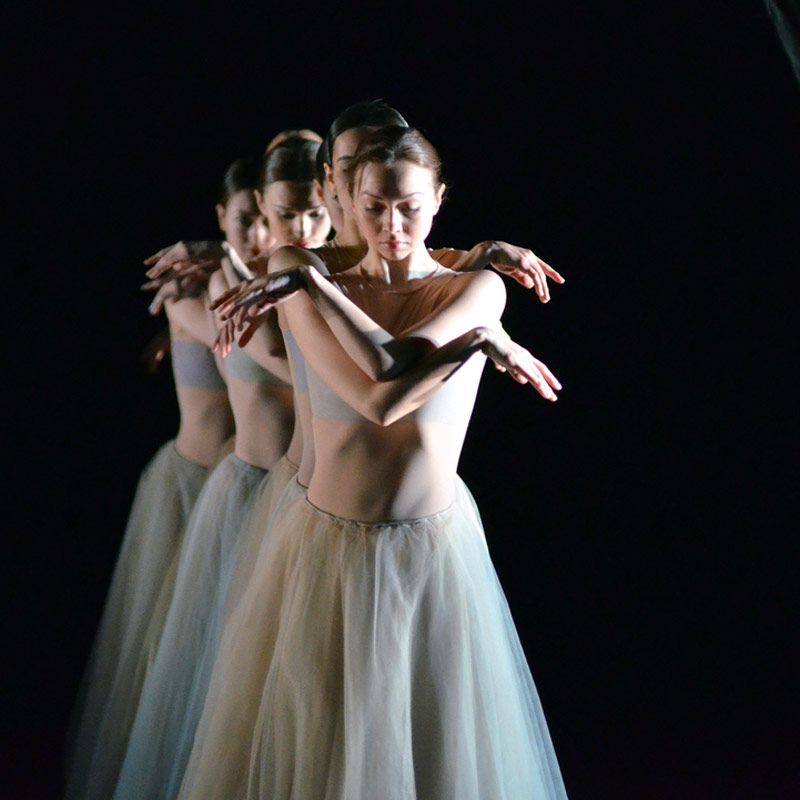
© Dave Morgan. (Click image for larger version)
Like a lot of second-rate contemporary ballets Prelude is meandering, unstructured and has an only tangential relationship to the music. At its best, it creates striking stage pictures. But its function is more practical: it allows the dancers of this classical company to push beyond their usual range of movement. Like every company, the Mikhailovsky needs new work, to feed its dancers and its audiences. One can’t live on Giselle and Le Halte de Cavalerie alone. But these dancers deserve something better than Prelude.













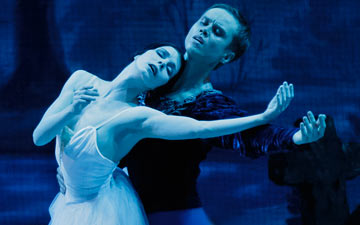
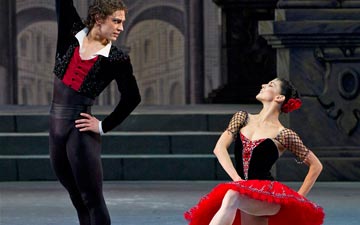

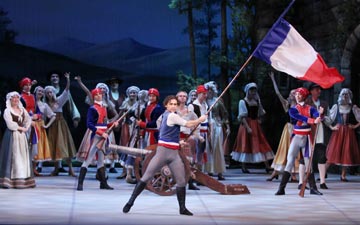
[…] Asaf Messerer’s Class Concert, and Nacho Duato’s Prelude. I reviewed the program for DanceTabs. Here’s a short […]
Here are some photos from actual event from Nov.19
http://www.jackdevant.com/three-centuries-of-russian-ballet/
Thank you!
Dear Marina Harss,
FYI
Natalia Osipova (Rus Наталья Осипова) as Kitri, Ivan Vasiliev (Rus Иван Васильев) as Basilio in Don Quixote. Mikhail Venchikov as Espada a Toreador, Anastasia Soboleva as Street Dancer, Alla Matveyeva and Alexey Malakhov in Fandango, Marat Shemiunov as Don Quixote, Alexey Kuznetsov as Sancho Panza. Music by Ludwig Minkus, choreography by Marius Petipa and Alexander Gorsky, staging by Mikhail Messerer. Shot on 20.11.2014
http://www.jackdevant.com/natalia-osipova-and-ivan-vasiliev-in-don-quixote/
yours
Jack